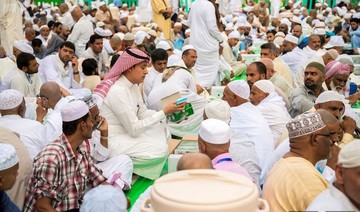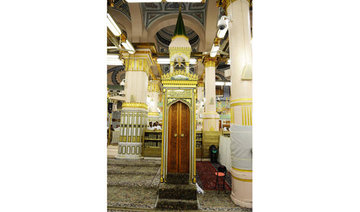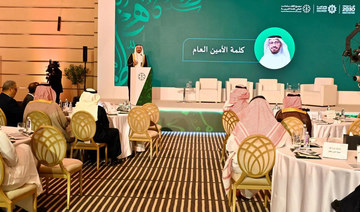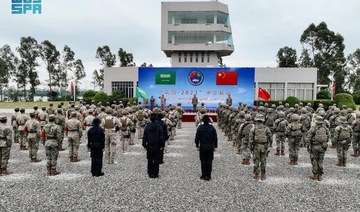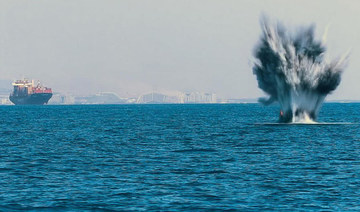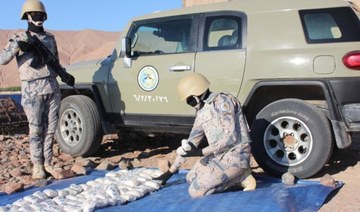The Prophet’s Mosque in Madinah is a place Muslims from around the world visit while performing Hajj and Umrah, or simply to pray (performing the salat) and visit Prophet Muhammad’s tomb.
One of the world’s largest mosques, the Prophet’s Mosque underwent several expansions throughout its history, starting with the days of the caliphs, followed by the Umayyads, the Abbasids, the Ottomans, and, finally, the Saudi era, during which it underwent the largest expansion in its history and was the first place in the Arabian Peninsula to be lit by electric light bulbs in 1909 (1327 AH).
The Prophet’s Mosque, also known as Al-Masjid Al-Nabawi, was the second mosque built by Prophet Muhammad (peace be upon him) in the first year of Hijrah (the Prophet’s migration with his followers from Makkah to Madinah, which was called Yathrib at the time).
The land on which the mosque was built belonged to two orphans, Sahl and Suhail, and was used as a place for drying dates. The Prophet planned the mosque’s structure to occupy a 50 by 49 meter tract of land and built it facing Jerusalem, the Muslim’s Qibla at the time. He dug the foundation and used palm leaves for the roof and trunks of palm trees as columns.
The Prophet also built his mosque with three doors, one of which was in the back and was called “Atikah” or the “Door of Mercy,” while the other was the “Door of Gabriel” and was the Prophet’s preferred entrance.
In the back of the mosque, there was a shady area for sheltering the poor and strangers known as “Al-Saffa.”
Prophet Muhammad did not build a roof for the entire mosque, so when it rained, water would drip on worshippers. The worshippers asked the Prophet to support the roof with mud, but he refused and said: “No, an arish like that of Moses” — a trellis roof like that of Moses.
In its early days, the mosque’s floor was not covered with anything until in 3 AH (624 AD), when it was covered with pebbles.
When the Qibla was changed to face the Kaaba instead of Jerusalem, Al-Saffa, which was in the southern part of the mosque, was moved to the northern part. The back door was closed, and a new door was opened in the north.
The Prophet’s Mosque underwent its first expansion in the days of Caliph Umar ibn Al-Khattab in 17 AH (638 AD). Caliph Abu Bakr Al-Siddiq did not work on expanding the mosque since he was busy with the Ridda Wars, also known as the Wars of Apostasy.
The mosque became very crowded with worshippers in the reign of Caliph Umar, so he bought the surrounding houses and included them in the mosque to expand it by 20 cubits from the west, 10 cubits from the south (the Qibla part), and 30 cubits from the north. No expansion, however, took place in the eastern part of the mosque as the rooms of the prophet’s wives were located there.
After that expansion, the mosque’s length became 140 cubits from north to south and its width 120 cubits from east to west. It was built in the same form chosen by Prophet Muhammad; the walls were built of bricks, palm-tree trunks were used as columns, the 11-cubit-high roof was made of palm leaves, and the flooring was made of garnet grits. Caliph Umar also added a 2-cubit-high smock to the mosque.
The expansion that took place in the days of Caliph Umar was estimated at about 1,100 square meters. It also gave the mosque six doors: Two in the east, two in the west, and two in the north.
During the reign of Caliph Othman in 29 AH (650 AD), the mosque became too small for the large number of worshippers, so he consulted the Prophet’s companions on expanding it and they found it a good idea.
Caliph Othman had the mosque’s walls built of carved stones and plaster, its columns of engraved stones and iron rods installed in lead, and its roof of teak wood. The six doors were left as they were following the expansion done by Caliph Umar.
The Prophet’s Mosque remained as it was after the expansion carried out by Caliph Othman and until the reign of Al-Walid bin Abdul-Malik in 88 AH (707 AD). Al-Walid wrote to the ruler of Madinah, Omar bin Abdul Aziz (86-93 AH / 705-712 AD), ordering him to buy the houses around the Prophet’s Mosque in order to expand it. He also directed him to include the rooms of the Prophet’s wives in the expansion.
Following the directives of Al-Walid, Omar bin Abdul Aziz expanded the Prophet’s Mosque and made the Prophet’s tomb part of it. Therefore, Al-Walid’s expansion was from three sides — east, north, and west — and the southern wall’s length became 84 meters, the northern wall 68, and the western one 100. The whole expansion was estimated at about 2,369 square meters.
The expansion during the reign of Al-Walid bin Abdul-Malik included building a hollow mihrab and minarets for the first time in the Prophet’s Mosque. A total of four minarets were built, one in every corner, as well as terraces on the mosque’s roof.
No expansion was done in the Prophet’s Mosque after Al-Walid’s expansion, but there were some repairs and renovations.
A fire erupted in the Prophet’s Mosque in 654 AH (1256 AD), and a number of Muslim caliphs and leaders contributed to restoring it. The first to contribute to was the last Abbasid Caliph, Al-Musta’sim Billah, who sent supplies and builders from Baghdad to fix the mosque in 655 AH (1257 AD).
The Abbasid caliphate ended with the fall of Baghdad at the hands of the Tatars. After that, a second fire erupted in 886 AH (1482 AD), destroying many parts of the mosque’s roof. Sultan Qaytbay, ruler of Egypt at the time, received word of the incident and, subsequently, sent supplies, workers, and materials and the mosque was roofed in 888 AH (1484 AD).
Qaytbay’s expansion, estimated at 120 square meters, was completed in 890 AH (1486 AD) and was the last done before the Ottoman and Saudi eras.
No change took place in the Prophet’s Mosque since Qaytbay’s expansion and reconstruction work for 387 years, but during this period, a lot of repair and renovation work was done to the minarets, walls, and doors, and the crescents above the minarets as well as the dome were replaced. Nevertheless, no complete demolition and reconstruction took place until the reign of Sultan Abdulmejid.
The Ottoman Caliph, Abdulmejid II, sent architects, builders, workers, supplies, and materials in 1265 AH (1849 AD) to reconstruct and expand the mosque. The process took 13 years. Materials used included red stone from Al-Jamawat Mountain west of Madinah (known today as Al-Haram Mountain). These stones were used for building columns, while walls were built of black basalt stone.
The largest expansion of all time in the Prophet’s Mosque took place during the reign of the late King Abdullah alongside his umbrella project. He ordered the installation of 250 umbrellas on the columns in the mosque’s courtyards to shade 143,000 square meters around the mosque. More than 800 worshippers can pray under each of these umbrellas.
Moreover, six tracks in the southern part of the mosque were shaded to protect pedestrians.
The umbrellas were specially made for the courtyards of the Prophet’s Mosque. They employ modern technology and operate with high proficiency. They were also tested in the manufacturing country and designed to be of two different heights to overlap and ensure no sun rays or rain reach worshippers. The height of the first group of umbrellas is 14.04 meters, while the second group is 15.03 meters tall. The height of all umbrellas when closed is 21.07 meters.
Madinah saw the largest expansion in the history of the Prophet’s Mosque in late 1433 AH (2012 AD), when King Abdullah laid the foundation stone to expand the mosque so it would be able to accommodate two million worshippers once the project was completed.
King Salman took up the torch after King Abdullah died, and stressed the importance of resuming work in the expansion project and other work that serves Islam and Muslims. Saudi Arabia’s leaders are all very keen to serve and enhance the Two Holy Mosques and provide all services in the holy sites so that pilgrims can easily complete Hajj and Umrah.
The Prophet’s Mosque: Great status and vast expansions in the Saudi era
The Prophet’s Mosque: Great status and vast expansions in the Saudi era
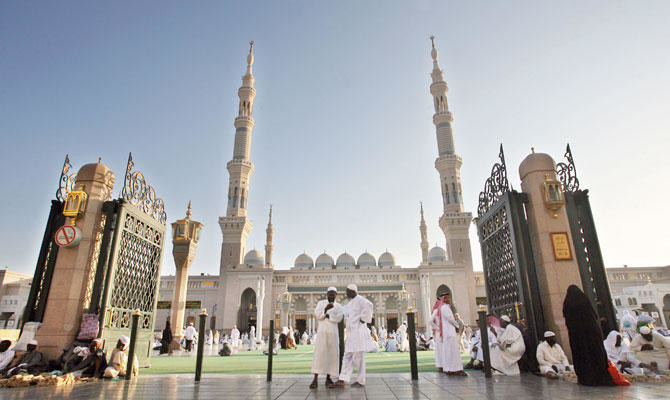
- The Prophet’s Mosque underwent its first expansion in the days of Caliph Umar ibn Al-Khattab in 17 AH (638 AD)
- The largest expansion of all time in the Prophet’s Mosque took place during the reign of the late King Abdullah alongside his umbrella project
King Salman academy to host Arabic education forum in Seoul

- Scholars, teachers, linguistic experts will attend May 9 and 10
- Discussions on curricula, teaching methods and Arab culture
RIYADH: The King Salman Global Academy for Arabic Language is partnering with the Korean Association of Arabic Language and Literature and Hankuk University of Foreign Studies to host an international conference in Seoul, South Korea.
The conference, titled “Challenges and Prospects of Teaching Arabic Language and Literature,” is set for May 9 and 10, the Saudi Press Agency reported on Monday.
Participants will discuss key issues involving Arabic-language education globally and explore new approaches in response to evolving trends and needs.
The event will involve scholars, researchers and language experts; and will help promote Arab culture, the SPA reported.
The conference will focus six key areas related to teaching Arabic as a second language in Korea: modern methodologies, teaching materials, evaluation techniques, instructional strategies, and the current state of Arabic-language learning in Korea.
By bringing together experts and academics from Saudi Arabia, Korea and other regions, the conference is designed to assist Arabic-language teachers and non-native speakers.
The King Salman academy is also set to launch its upcoming international conference on computational linguistics.
Red Wave-7 naval drill kicks off in Saudi Arabia

RIYADH: The Red Wave-7 naval exercise has started at King Faisal Naval Base, home of the Western Fleet.
As well as the Royal Saudi Naval Forces, taking part are countries including Jordan, Egypt, Djibouti, and Yemen, along with the Royal Saudi Land Forces, the Royal Saudi Air Force, and units of the Saudi Border Guard.
The commander of the Western Fleet, Rear Admiral Mansour bin Saud Al-Juaid, said the drill aimed to enhance maritime security for countries bordering the Red Sea and protect territorial waters, according to Saudi Press Agency.
The drill includes a number of scenarios featuring exercises that offer significant training opportunities. There will be strategic lectures and simulated combat exercises designed to reflect potential real-world situations.
It will promote joint and combined operations, such as surface and air warfare, electronic warfare, and countering speedboat attacks. The forces will also conduct maritime security exercises, including protecting shipping lines and combating smuggling, terrorism, piracy and illegal immigration.
Al-Juaid said naval ships, helicopters, fast response boats, naval infantry, maritime special security forces and various types of combat aircraft would all be deployed over the duration of the drill.
Hareed Festival: A window into the heart of the Farasan Islands

- Annual event highlights tourism potential
Riyadh: The Farasan Islands, a string of coral islands nestled 40 km off the coast of Jazan in the Red Sea, have been abuzz with activity recently as they hosted the 20th Hareed Festival.
This vibrant annual event celebrates the arrival of parrotfish, also called hareed, in the islands’ shallow waters, the Saudi Press Agency reported on Sunday.
The islanders have cherished this event for generations, transforming it into a social gathering that goes well beyond the arrival of the fish.

Visitors to the festival got a glimpse of the islands’ rich cultural heritage as it showcased the area’s unique customs, traditions, folk games, and handicrafts. It also focused its spotlight on Farasan’s remarkable tourism potential and historic sites.
Al-Dana provides one of the highlights. It is a captivating form of vocal art that is one of Farasan’s oldest folk traditions. It forms a poignant expression of longing, a result of the hardships endured by sailors on extended pearl-diving expeditions. The challenges faced by these brave men fueled the art form, which is deeply rooted in Farasan’s cultural identity.
The annual festival also gives an opportunity for Farasan residents to display their traditional handicrafts. Visitors can watch the making of fishing traps and nets, the intricate weaving of palm fronds, the creation of bags and rugs, and hat knitting.
A designated area at the hareed fishing site catered to families and children. Visitors could experience the thrill of catching parrotfish using a traditional method that involved setting up barriers to prevent the fish from escaping. This competition, a centuries-old tradition, allowed families to connect with the region’s fishing heritage.

Farasan’s most renowned tourist attractions highlighted the islands’ potential for tourism.
Al-Qassar village, which is located only 5 km from Farasan Grand Island, is a popular tourist site. This heritage village, which is built of stone and palm leaves, is home to the archipelago’s largest palm oasis.
Al-Qassar has served as a summer retreat for Farasan residents. People travel by camel to spend a three-month break in the village during the season of Al-Asef, the northwestern summer wind that comes after the hareed fishing season.
Famous for its abundance of fresh groundwater, Al-Qassar village comprises around 400 houses. These unique dwellings, with stone walls and roofs made of palm tree planks, leaves, doum palm, or anisotes trisulcus branches, topped with algae and mud, are made by traditional building techniques designed to withstand the elements.
The Hareed Festival is a window into the heart and soul of the inhabitants of the Farasan Islands; a celebration of culture, tradition, and the islands’ natural beauty.
Saudi Border Guard arrest 4 attempting to smuggle qat

JAZAN: The Kingdom’s Border Guard in Al-Ardah, Jazan, recently arrested four Yemeni nationals attempting to smuggle 80 kg of qat into the country, the Saudi Press Agency reported on Monday.
Mostly chewed by users, Qat is a mild stimulant and illegal across most of the Arab world.
The government has urged citizens and residents to report any information they have regarding drug smuggling or sales to the General Directorate of Narcotics Control. Reports can be made by calling 911 for Makkah, Riyadh and the Eastern Province, and 999 for other regions. Alternatively, information can be emailed to [email protected]. All reports are treated confidentially.
KSrelief distributes food in Pakistan, drills solar-powered wells in Nigeria

DUBAI: KSrelief, Saudi Arabia’s aid agency, recently distributed 370 food baskets in the flood-hit Shangla district of Khyber Pakhtunkhwa province, Pakistan, benefiting 2,590 individuals.
The aid was a part of the fourth phase of the Kingdom’s Food Security Support Project in Pakistan 2024.
Last week, KSrelief, in collaboration with a civil society organization, initiated a project to drill six solar-powered medium-depth water wells in Kwara State, Nigeria. The wells, each at a depth of about 80 meters and equipped with tanks holding 5,000 liters, are for the benefit of 30,000 individuals.
The beneficiaries lauded Saudi Arabia for addressing their vital water needs.





